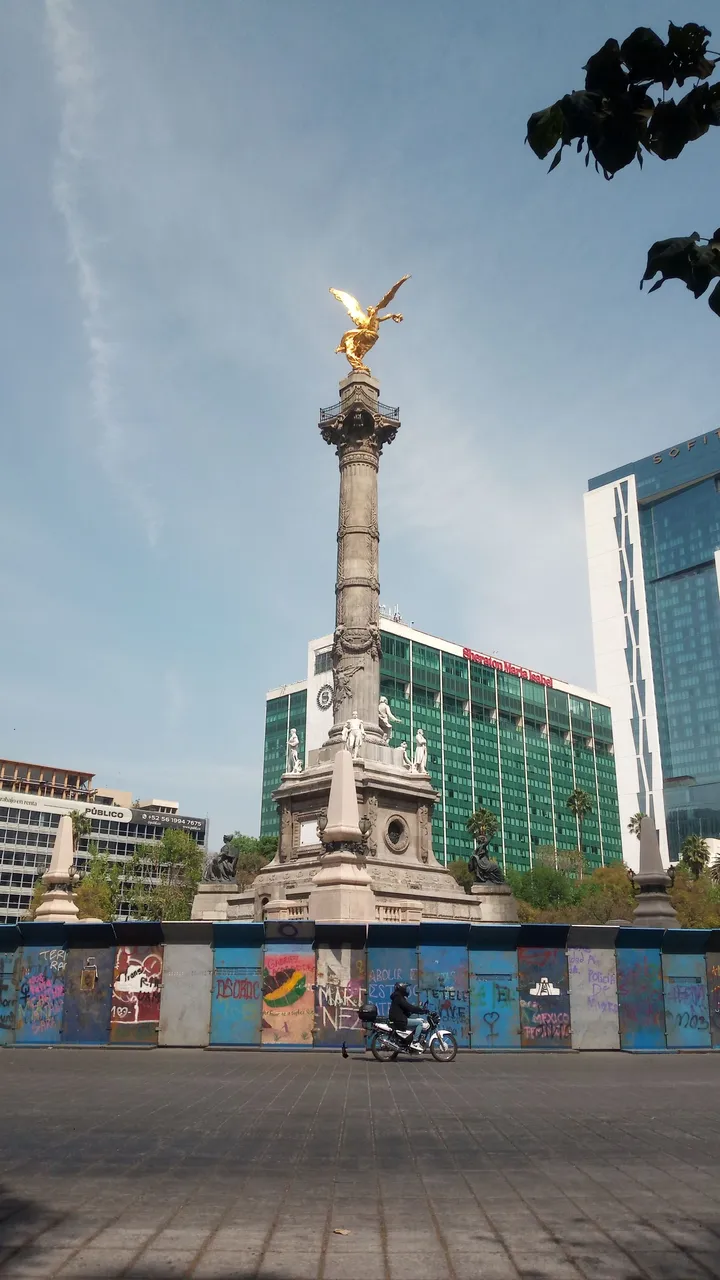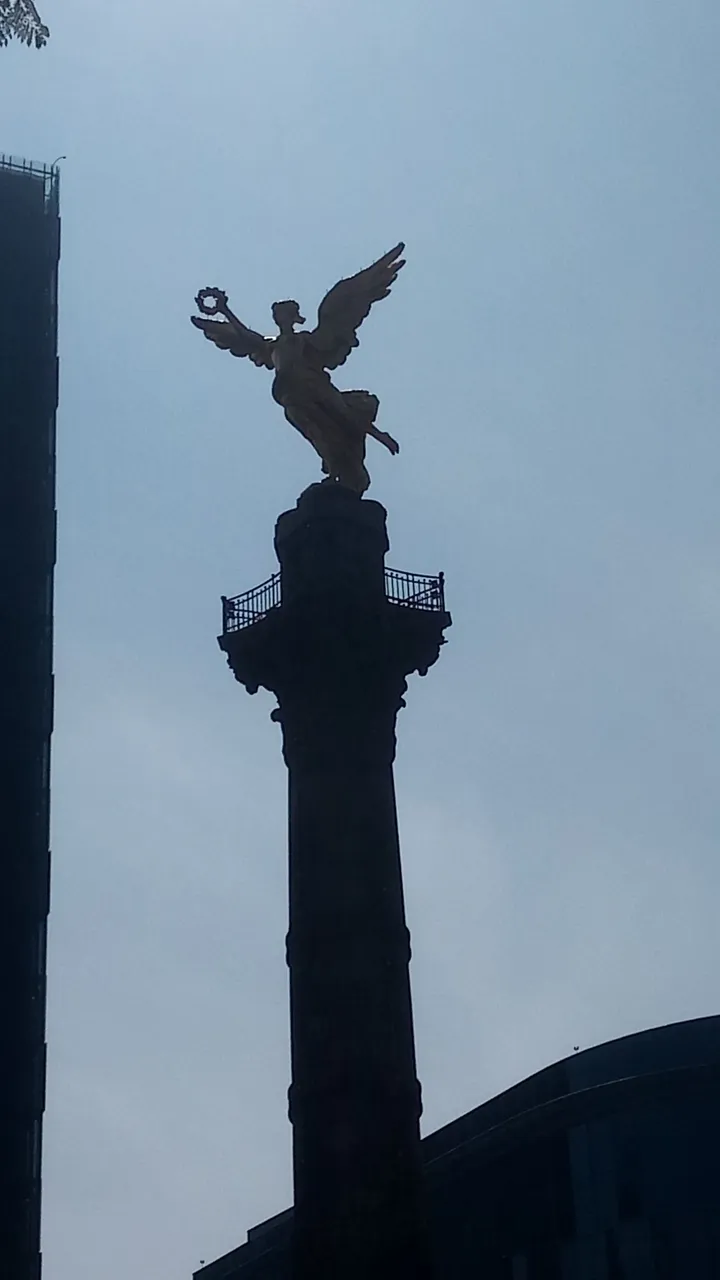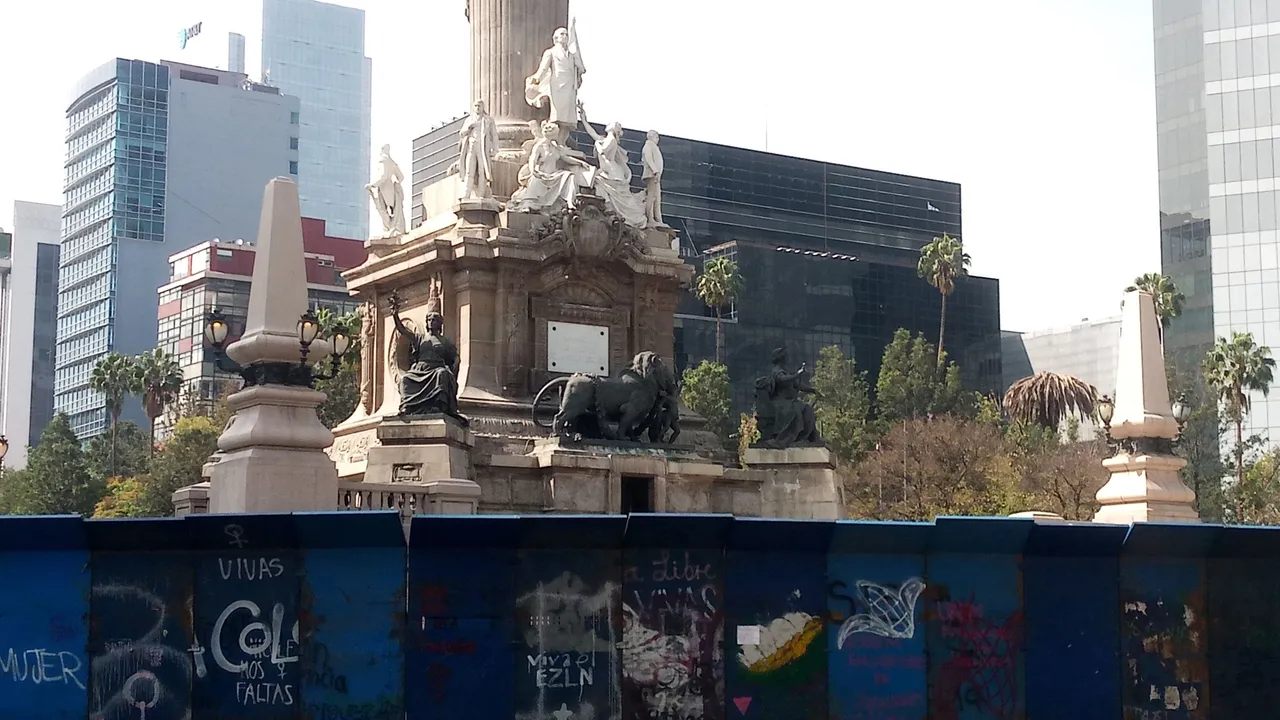Yesterday I took a bit of a walk down Paseo de la Reforma, Mexico City's grand promenade, running between the city center and Chapultepec Park, close to where I live. The reason for my excursion was a very specific tourist destination, one that I ticked off my list many years ago, when I first visited this city, long before I even imagined living here: the Angel of Independence. And since then I never felt the need to go back, until now, thanks to a post by @city-of-berlin featuring a similar sight in Berlin, the Victory Column.

Glorious Angels Towering Over the City
When friends from Germany come to visit me in Mexico City, they typically draw a comparison of the two columns, just like when my wife and niece came to visit me in Berlin last year. And sure enough, they do have certain things in common. In fact, they are not the only two, by far. If you visit the entry for Victory Columns on Wikipedia, you'll find a list of way over a hundred various columns throughout history worldwide. Admittedly, their styles, heights, and purposes differ so much, that I believe it takes away from the striking similarities that many of them have. Scrolling through the list, though, you will quickly notice that there are several that meet the same profile. Some of the more noteworthy ones include the July Column in Paris, the column at Hero's Square in Budapest, the Angel of Peace in Munich, and (the other one in the German capital) the Peace Column at the Mehringplatz in Berlin.

Specifics about "El Ángel"
As the name suggests, Mexico's Angel of Independence was built in 1910 to commemorate the country's independence from Spain a century earlier. It was designed by architect Antonio Rivas Mercado as a monument, to which a mausoleum was added later, for the most important heroes of that war. The overall height of the monument is allegedly 45 meters, however, since this entire city is built on a soft muddy lake bed, all the structures are slowly sinking into the ground. For this reason, the original nine steps leading up to the base of the column have been extended by fourteen additional ones.

The statue on top is the Greek goddess Nike, equivalent to the Roman Victoria, holding a golden laurel wreath in her right hand. Her left hand is holding a broken chain, symbolizing the end of bondage to Spain. She was designed by Enrique Alciati, and is made of bronze covered in gold. Inside the column there is a spiral staircase of 200 steps leading to an observation platform for a nice view of the surrounding part of the city. The entry is free, provided the monument is open for visitors, which hasn't been the case lately...

A Slight Disappointment: Column Still Off Limits!
When I arrived at the huge roundabout where the Angel stands, I realized that I was not going to be able to provide the kind of picture I was hoping for, looking out from the top of the column. As you can tell by the heavy barricades surrounding the monument, access to it is still closed to the public. This is not the first time the Angel is being renovated. In 1957 an earthquake shook the column, causing the Angel to fall to the ground and break into many pieces, forcing the government to keep it closed for a year. Most recently the monument became victim to vandalism in 2019, as part of a demonstration against feminicides and gender violence. I have hoped that since then they would have completed the necessary restoration, but apparently not much has happened. Maybe the authorities want to keep the sight as it is, to serve as a reminder that there are still more than 3000 women who become victims of feminicides in Mexico each year. Still, the statue proved to be nicely photogenic from ground level.